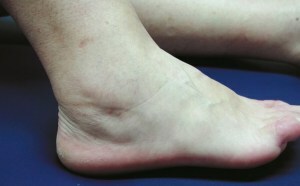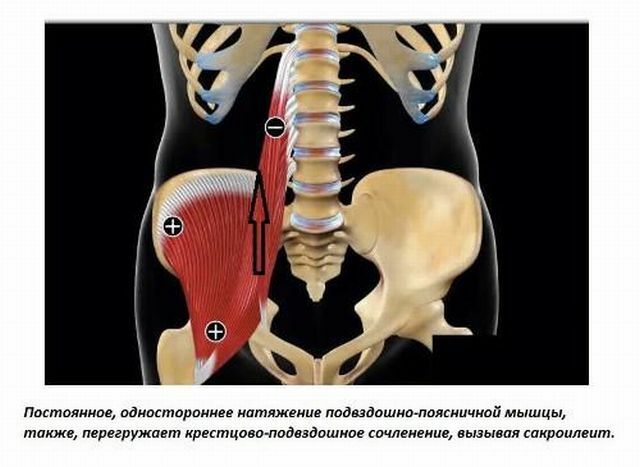 Perichondritis is rarely diagnosed and is an inflammatory process occurring in the perichondrium.
Perichondritis is rarely diagnosed and is an inflammatory process occurring in the perichondrium.
This tissue to some extent performs a protective function, protecting the cartilaginous joints, as well as ensuring their growth and nutrition.
If we consider the localization of the inflammatory process, the ear, larynx or intercostal area usually suffers.
Features of the disease
The disease occurs with structural changes of the perichondrium, which means that the cartilage is deprived of adequate nutrition, since there is no other source of the necessary elements.
Sometimes the periosteum is compared by functions with perichondrium along the course of pathological processes, but if the dermis is dying, then it has the ability to feed from the bone marrow, and the cartilage does not.
It is with this disease and can be observed such a situation, when the consequences of inflammatory reactions of the perichondrium lead to necrosis of cartilage.
The most commonly diagnosed perichondritis of the auricle than the ribs or larynx.
Causes of inflammation
Inflammation is provoked due to the development of infection, and this can happen in the presence of the following factors:
- Injuries .Violation of the integrity of tissues can lead to infection and inflammation. In connection with damage, disturbances in the reactions of metabolism and nutrition of cells begin to form, there is a risk of infection, which in combination leads to negative consequences, including tissue death. Particularly often Perichondritis is diagnosed on the basis of injuries in men, including those engaged in martial arts;
- Microbial diseases of the body , passing into the area of the perichondrium. It can be both severe infectious diseases, and flu, otitis media, viral pathologies.
- Consequences of chemotherapy , which is mainly characteristic of damage to the perichondrium of the larynx.
The main causes of the disease are associated with the penetration of infection into the surrounding and nourishing cartilage tissue, infection of the site. No hereditary predisposition to inflammation of the area of the perichondrium was found.
Classification of the disease
There is a division of perichondritis into areas or areas of localization on:
- Inflammation of the auricle .The most common variant of inflammation, arising both in connection with injuries and

. In the photo, the perichondritis of the auricle
under the influence of bacteria that have gotten into them often is a consequence of otitis. Soreness is present with varying intensity, it all depends on the state of the lesion. The ear is even visually deformed, there is swelling and even a discoloration. Perichondritis of the auricle is easily diagnosed, treatable, the main thing is to do it in time before the onset of the consequences for the whole organism and the hearing organ in particular. When the stages are started, surgical intervention is prescribed, and, if necessary, additional cosmetic correction;
- Disease of the larynx .The disease is quite heavy due to the peculiarities of the structure of the laryngeal cartilage itself, the restoration of which is difficult. Usually inflammation of the larynx is formed due to accompanying serious dysfunctions of the body, in particular, cancer, syphilis, tuberculosis and so on. In a number of cases it is radiotherapy that provokes tissue destruction and necrosis. The process is accompanied by the formation of abscesses, the opening of which is dangerous for the respiratory tract and esophagus;
- Inflammation of ribs and intercostal space .The modification around the cartilaginous tissue is mainly due to trauma. Optionally, the symptomatology will manifest itself immediately, perhaps after a while, but the period of the acute stage can be very long, up to 90-100 days. The condition is quite painful and can develop rapidly, covering new areas of cartilage. The main reason for this type of perichondritis is open trauma, less often the appearance of a foci within the body. Treatment can be lengthy, including surgery. Admission of only analgesics without appropriate treatment leads to necrosis of cartilage, the spread of foci of inflammation.
In addition to differences in locations of localization, the process of inflammation itself can be purulent or aseptic.
At the initial stage occurs in the form of seals, and with the development of the disease, such processes as the formation of deposits or calcification, the reduction of the space between the ribs begin to occur. Purulent form is characterized by the formation of substances, the removal of which is possible only surgically.
The process proceeds with the destruction of the cartilage, the formation of fistulas. For the aseptic case, the symptomatic decrease is typical and conservative treatment is often sufficient.
Approach to diagnosis and treatment of
Depending on the location of the problem area, as well as the form of development( purulent or aseptic perechonditis), the physician decides on the forthcoming treatment.
 If the case is not neglected, then conservative treatment can be managed, and in case of significant lesions, development of necrosis or other adverse events, surgery may be recommended.
If the case is not neglected, then conservative treatment can be managed, and in case of significant lesions, development of necrosis or other adverse events, surgery may be recommended.
For an accurate diagnosis, as well as for studying the state of cartilage, surrounding tissues and inflammatory foci, a blood test, urine, is performed. If there are suspicions of perichondritis of the ribs, MRI can be recommended.
The following options are available for treatment:
- Antibiotics .Since the susceptibility of purulent compounds to antibiotics may be different, studies are first conducted to increase efficacy. Take a portion of pus, check the resistance of bacteria to these or other components of antibiotics, and only then select the drug itself.
- Antihistamines , for the prevention of typical allergic reactions, edema and so on.
- Antiseptic preparations .It is advisable to use them if local exposure to the site is possible. This can be special compresses, for example, with boric acid, dissolved antibiotics, ointments.
- Effects of ultraviolet and other physical therapy methods .
- Surgical intervention .The operation can be aimed at cleaning or removing the hearth, eliminating the cartilage itself, which is practiced in the Tietz syndrome, rib perichondritis.
- Common restorative means , contributing to improve the body's resistance, stimulate the immune system.
What is the danger of the disease?
Timely measures of treatment make it possible to get rid of the disease without serious consequences, it is important to do it in a timely manner. 
If there is purulent perichondritis, then this accumulation of bacteria is dangerous not only for surrounding tissues, but for the body as a whole.
Infection can adversely affect internal organs. Surgical interventions for ear inflammation entail a visual change in the shell, which sometimes requires cosmetic procedures and corrections.
It is easier to get rid of many diseases in the early stages and it's better to see a doctor once again for examination and diagnosis than to spend a long and not always cheap treatment.



